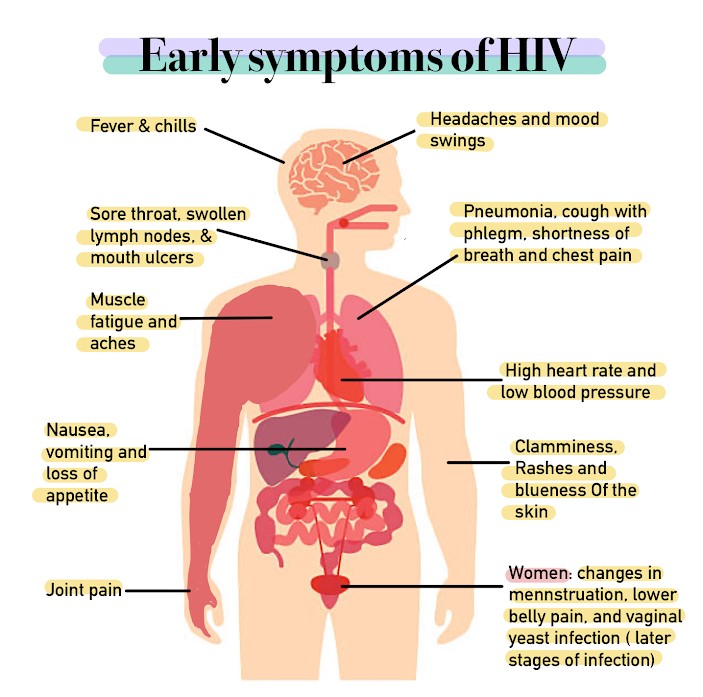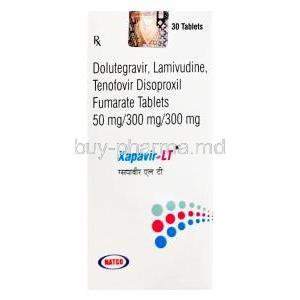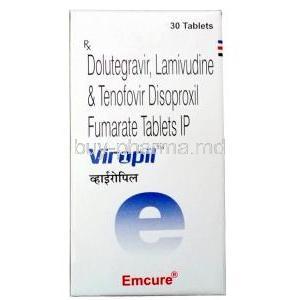Ritomune
- I. Introduction to Ritomune
- II. Composition of Ritomune
- III. How Ritomune Works
- IV. Uses of Ritomune
- V. Off-Label Uses of Ritomune
- VI. Dosage and Administration of Ritomune
- VII. Potential Side Effects of Ritomune
- VIII. Interaction of Ritomune with Other Substances
- IX. Special Considerations and Warnings for Ritomune Use
- X. Ritomune Administration in Special Populations
- XI. Overdosage of Ritomune: Risks and Management
- XII. Storage and Handling of Ritomune
I. Introduction to Ritomune
A. Brief Overview of Ritomune
In fighting HIV/AIDS(1) infection, Ritomune (Ritonavir) is an indispensable pharmaceutical agent. Its strong protease inhibition capabilities help manage the condition effectively by hindering virus replication within the body and slowing down disease progression
1. Understanding HIV - HIV Treatment: The Basics

Early Symptoms of HIV
B. History and Development of the Drug
A milestone moment arrived with Ritomune’s endorsement by the FDA(1) in 1996. With its revolutionary formulation and impressive effectiveness, this drug symbolized renewed faith for those facing grim outcomes from HIV/AIDS during that period. Its introduction drove progress towards more comprehensive therapies like combination therapy that continue to benefit patients today.
C. Understanding its Role in Medicine
Ritomune's effectiveness as an antiretroviral medication has undoubtedly had immense significance within medicine. Nevertheless; unfolding research indicates that there may be broader health applications for this drug, too - including treatments for Hepatitis C., specific cancers, and potentially COVID-19 - although conclusive evidence is yet forthcoming on these claims So far,. Therefore, acknowledging ongoing scientific inquiry; one can confidently state that Ritomune's medicinal contribution stands out owing primarily due to its versatility and potent efficacy.
II. Composition of Ritomune
A. Active Ingredients
Ritonavir is the active ingredient in Ritomune which makes it a highly effective therapy. As a potent compound of protease inhibitors, it specifically targets the viral protease - an essential enzyme in the HIV life cycle.
B. Inactive Ingredients and Their Roles
Beyond just containing ritonavir as an active ingredient Ritomune also incorporates key excipients like polyoxyl 35 castor oil, propylene glycol,and anhydrous ethanol,a combination that helps maximize the drugs' benefits. Though these ingredients might appear trivial at first glance. The roles they play in enhancing bioavailability. Stabilizing potency. And aiding absorption cannot be overstated. Thanks to this carefully crafted formulation Ritomune is able to offer significant relief and comfort for people living with HIV.
C. Formulation and Pharmacological Properties
By providing both oral tablet and solution variants, Ritomune allows for easy customization in terms of administration. This drug boasts impressive features such as its strong protein binding capacity, lengthy half-life, and intricate hepatic metabolism, all contributing to its excellent antiretroviral properties.
III. How Ritomune Works
A. Mechanism of Action in the Body
Inhibition of HIV protease is how Ritomune works to curtail the progression rate associated with HIV infection. It accomplishes this objective by impairing both cleavage action upon polyprotein and subsequent virion assembly- two steps crucial to virus survival and proliferation within target cells. Consequently, this interruption significantly slows down disease pathogenesis due to delayed replica processes associated with retroviral infections.(1)
1. "Ritomune | Uses, Dosage, Side Effects, FAQ - MedicinesFAQ".
B. Pharmacokinetics: Absorption, Distribution, Metabolism, and Excretion
Ritomune demonstrates exceptional absorption after oral administration. It becomes widely distributed throughout the body by binding extensively with plasma proteins. Through metabolism by hepatic enzymes within the cytochrome P450 system, it produces numerous metabolites that have potent antiretroviral activity as well as a longer overall effect time on patients’ health status than other drugs administered to fight HIV, such as zidovudine or didanosine owing partly due do avoided anemia side effects experienced from Zidovudine therapy alone. The drug is eliminated via renal and fecal pathways, having an estimated half-life of around 3-5 hours.
C. Impact on the Immune System
Ritomune enables a consistent suppression of viral replication resulting in a rejuvenated immune system. The reduction in viral load allows the immune system to recuperate and regenerate itself. A marked improvement in immunity against infections and opportunistic diseases presents itself with an increased CD4 cell count.
IV. Uses of Ritomune
A. Approved Medical Uses
Ritomune holds an essential spot among protease inhibitors used specifically amongst patients dealing with an HIV/AIDS diagnosis worldwide since this medication's role centers on combating viral replication directly(1). Thus avoiding weakening these individuals' immune systems too swiftly while also averting severe complications from occurring at increased rates early on into diagnosis fulfill their purpose efficiently as well as effectively as possible given their limitations but are nonetheless vital components helpful when managing advanced conditions like these successfully despite no currently available cure options existing yet should remain mindful about preventing future transmissions from happening whenever suitable opportunities arise.
1. Ritomune- Dose, uses and side effects
B. Effectiveness and Efficacy in Treating Conditions
Research shows that Ritomune effectively manages HIV/AIDS based on findings from multiple clinical trials. A key takeaway from these studies proves that this medication reduces viral load by inhibiting virus replication within an individual’s body leading to an improved immune response with higher CD4 cell count and life expectancy increase among adherent patients.
C. Real-World Patient Experiences
Versatile cases in the real world affirm that Ritomune is genuinely clinically effective as a treatment option for many patients facing ailments related to the immune system's function, like HIV/AIDS infection(s). Most patients frequently report witnessing considerable improvement concerning
- their general wellness, including elevated quality standards
- due regard was given by hospital staff or respective physicians or doctors responding to timely solutions or remedies when needed—confirming that Ritomune has a critical medical role.
While side effects may be inevitable, the patient's overall safety and wellness are manageable under medical supervision. Patients must adhere tenaciously to the medication’s schedules and maintain regular attendance for continuous monitoring by a physician or doctor. Indeed, narratives shared by individuals living with HIV/AIDS provide invaluable proof regarding how essential Ritomune is when managing and keeping one's health in check.
V. Off-Label Uses of Ritomune
A. Understanding Off-Label Prescribing
Off-label usage describes the administration of pharmaceuticals outside of authorized indications. Dosages, routes of administration or patient groups. This practice does not violate any laws and has been widely implemented in current medical practices. It stems from scientific observations and research that indicate potential benefits beyond those originally intended.
B. Potential Off-Label Uses and Supporting Studies
Exploring the numerous off-label applications of Ritomune underscores just how multifaceted this drug can be within medicine - particularly within two key areas:
1. Combatting Hepatitis C: Growing evidence suggests that administering a combination of antiviral medications inclusive of Ritomune could lead to better patient treatment outcomes.
2. Targeting cancer: Early research reveals that using Ritomune to inhibit cell growth may offer the possibility of an additional treatment avenue for select cancer types.
C. Risks and Considerations with Off-Label Use
Off-label usage can help expand the capabilities of Ritomune; however, caution should not be ignored regarding its potential for hazards. Intense research must back these treatments before safe implementation, as guaranteed by established standard safety protocols. The importance of promoting personalized care, which considers invaluable communication among healthcare professionals and their patients, cannot be overstated while deliberating on the merits vs. demerits of drug therapy. In addition, because patient reactions vary from anomalous treatment, conducting more frequent monitoring efforts matter greatly.
VI. Dosage and Administration of Ritomune
A. General Dosage Guidelines
It is standard procedure for the dosing of Ritomune to be adjusted based on each patient's unique health requirements. Adults who utilize this drug as a protease inhibitor are typically administered an initial dose of two tablets (600mg) twice daily. If leveraged as a pharmacokinetic enhancer instead. Patients take two tablets (100mg) twice daily or one tablet (200mg) once daily - both as recommended. Always ensure that you follow the advice given by your healthcare provider to guarantee the effective and safe use of this medication.(1)
1. Ritomune Norvir - Treatment
B. Special Considerations for Dosage Adjustments
Under specific circumstances, alterations in medication usage might prove beneficial. For example, when dealing with renal impairment cases in which there can be drug and metabolite accumulation risks at play - careful consideration for dose adjustment will turn out mandatory. Patients with liver disease who take Ritomune should reckon on requiring changes in dosing due to extensive liver metabolism issues. The administration of other drugs alongside Ritomune can also affect the efficacy of its use; thus adjusting dosage accordingly becomes paramount.
C. Administration Techniques and Best Practices
For those taking Ritomune, it can be consumed with or without food. Despite this, experts suggest taking it alongside a meal to increase absorption while reducing potential gastric troubles. Patients should follow their medication schedule carefully, given that irregular usage can result in lowered effectiveness or drug resistance.
VII. Potential Side Effects of Ritomune
A. Most Common Side Effects
As a rule, Ritomune is usually well-received. However, it should be acknowledged that selected individuals might undergo bothersome side effects. For instance, symptoms like nausea, vomiting, looseness of bowels, or stomach cramps can arise. Additionally, variations in gustatory perceptions, numbness, or irritation toward hands and feet, might also appear. Although relatively rare, the medication has been linked with higher than usual cholesterol).
B. Less Common but Serious Side Effects
The potentially harmful outcomes of consuming this medication are less commonly observed but still consequential. These include possible liver damage, pancreatitis incidents, and hypersensitivity reactions on top of alterations in heart rate patterns. Any such developments should necessitate requesting immediate access to medical care without delay.
C. Long-Term Side Effect Profiles
Metabolic abnormalities are real possibilities associated with lengthy administration of Ritomune, including lipodystrophy (alterations in body fat distribution), hyperglycemia, and insulin resistance. Given the foregoing, it is pertinent that a strict regime consisting of regular monitoring and proactive management be adhered to throughout long-term therapy.
VIII. Interaction of Ritomune with Other Substances
A. Interaction with Other Medications
As we consider the effects of Ritomune on liver enzymes which can impact drug interactions, keeping in mind the usage of various drugs like antivirals, antimicrobials & more, including antidepressants, could prove vital. Ideally, choosing open communication while revealing all prescribed medication dosages taken previously sheds greater clarity & assists your healthcare provider significantly in adjusting dosages for immediate results if required.
B. Impact of Food and Lifestyle Factors
Individuals taking Ritomune should be aware that consuming alcohol has the potential for increasing its concentration within their bloodstream, thereby accentuating any associated negative effects. Likewise, smoking deems possibly capable of reducing Ritomune's efficacy altogether. Nevertheless, simple everyday measures such as maintaining a nutritious diet and regularly engaging in physical activity can be beneficial for effectively managing some secondary outcomes like cholesterol level elevation or body fat redistribution.
C. Advice for Patients on Multiple Medications
Multiple medications often call for careful coordination between individuals and their healthcare providers. Effectively communicating with each other ensures that patients receive personalized treatment catered to their unique medical history while successfully combating potential drug interaction risks. Periodic check-ins and prompt adjustments as required enable suitable therapeutic management practices to facilitate positive outcomes.
IX. Special Considerations and Warnings for Ritomune Use
A. Contraindications for Ritomune Use
It is worth noting that if a known hypersensitivity exists towards specific elements within Ritomune, including Ritomune, then this medication is not recommended for that patient. Additionally, certain precautions have been advocated against using this medicine concurrently along with other potentially risk-prone medications such as antiarrhythmic, ergot derivatives, some specific sedatives, etc. Risky situations should indeed always be avoided, thereby necessitating stringent guidelines during medical prescriptions.
B. Careful Administration and Monitoring Parameters
Administering Ritomune requires meticulous attention. It is crucial to conduct periodic liver function tests, fasting lipid profiles, and blood glucose level monitoring. Any significant changes noted may need a dosage adjustment or discontinuation of therapy.
C. Important Precautions for Patients
For a patient's safety prior to Ritomune medication intake, careful revealing of medical history, including existing ailments like liver disease, diabetes, and heart problems, should be communicated well with one's primary healthcare provider. Also utmost consideration on other prescribed or non-prescribed medicines taken by the patient plus dietary supplements should not be overlooked since it can affect drug interaction with the ritonavir brand name known as ritomune.
X. Ritomune Administration in Special Populations
A. Administration to Elderly Patients
Elderly patients necessitate meticulous dosing and attentive monitoring due to their heightened vulnerability to liver, renal, or cardiac dysfunction as well as potential enduring health issues or medication regimens.
B. Administration to Pregnant Women and Nursing Mothers
In light of possible hazards, pregnant women must cautiously contemplate using Ritomune by weighing its probable advantages over potential dangers. To protect their nursing infants from severe adverse effects and prevent transmission of HIV, it is crucial for mothers to refrain from breastfeeding while on this medication.
C. Administration to Children and Adolescents
In pediatric patients aged one and up. It's standard practice to incorporate Ritomune into a holistic treatment plan. To ensure optimal results. Dosages should be tailored to the individual's body surface area and monitored regularly.
XI. Overdosage of Ritomune: Risks and Management
A. Symptoms and Dangers of Overdosage
Although the specific signs of an overdose involving Ritomune are yet to be identified with certainty, excessive use can amplify already known adversities such as gastrointestinal problems and pancreatitis as well as liver disorders. In grave situations where overconsumption occurs, one may suffer from shock or multiple organ failure.
B. Immediate Steps for Management of Overdosage
Suppose a patient presents with symptoms of overdosage. Professional medical attention must be provided promptly. Henceforth proper close monitoring and supportive interventions shall be initiated as required. Gastric lavage or activated charcoal can potentially aid in lessening drug absorption rates and thus contribute towards improving the recovery process for patients.
C. Long-Term Effects of Overdosage and Follow-up Care
Given that the longer-term outcomes of overdosage remain largely unclear. Closely observing those affected is vital. It's possible for there to be an increased likelihood of side effects occurring or even drug resistance emerging. Therefore. Consistent and vigilant monitoring is necessary to detect and deal with any potential adverse health impacts swiftly and efficiently.
XII. Storage and Handling of Ritomune
A. Recommended Storage Conditions
Store Ritomune with care, as its effectiveness relies on proper storage methods. Exposing this medication to temperatures outside the range of 20°C to 25°C (68°F to 77°F) may compromise its efficacy. To avoid damaging this product due to light or moisture exposure. Keeping it in an excellent and arid location is necessary. Remembering to handle this medication carefully by ensuring that it remains safely out of reach from children will also contribute towards responsible usage.
B. Handling Precactions and Safety Measures
Forethought should be given to evade any interaction between Ritomune and your skin or eyes since it has been known to lead to irritating effects. If there is exposure between these two entities, kindly rinse off all affected areas thoroughly using water. When a dose is overlooked during administration, please continue on your regular dosage plan instead of surpassing or doubling up.
C. Disposal of Unused or Expired Medication
You should not throw away any unused or expired medication in your household waste or down the drain. Its important to dispose of such medication properly by returning it to a pharmacy or following local regulations. Taking these steps can help prevent harm to the environment.















